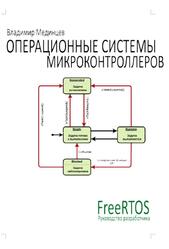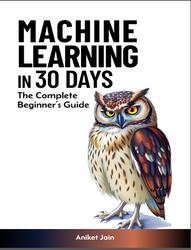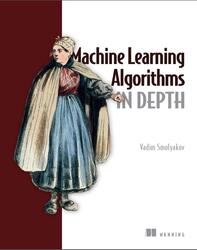As ML and AI are getting bigger and bigger these days, there are many books and courses on algorithms, domains, and other specific aspects. However, they don’t provide an entire vision. This leads to the problem Arseny and Valerii have seen in multiple companies, where solid engineers successfully build scattered subcomponents that can’t be combined into a fully functioning, reliable system. This book aims to, among other things, fill this gap.
This book is not beginner friendly. We expect our readers to be familiar with ML basics (you can understand an ML textbook for undergraduate students) and to be fluent in applied programming (you have faced real programming challenges outside the studying sandbox).

ML system design: What are you?
ML system design might sound familiar if you have ever tried interviewing at deep tech/big tech companies (the first term commonly stands for startups or R&D units within large corporations that either work with or develop cutting-edge technology, and the second term refers to the largest and most dominant tech companies of the world that are often known for their high bar in talent acquisition and advanced engineering culture) for ML engineer/manager positions. Both of us have vast, deep tech experience, so while planning to write this book, we were convinced the definition was clear enough to everyone, and there was no reason to dwell on it.
However, after reaching out to a variety of people for their opinions on the outline, we saw that the term itself caused discord in opinions and interpretations. Perhaps this is due to the fact that the industry has long had a definite list of job titles, which gives candidates a relatively clear understanding of what set of functions and responsibilities they are applying for. The positions of software engineer, research engineer, ML engineer, and so on each entail a certain classic set of functions enshrined in textbooks and eloquently stated in job descriptions.
CONTENTS.
Preface.
Acknowledgments.
About this book.
About the authors.
About the cover illustration.
PART 1 PREPARATIONS.
1 Essentials of machine learning system design.
2 Is there a problem?.
3 Preliminary research.
4 Design document.
PART 2 EARLY STAGE.
5 Loss functions and metrics.
6 Gathering datasets.
7 Validation schemas.
8 Baseline solution.
PART 3 INTERMEDIATE STEPS.
9 Error analysis.
10 Training pipelines.
11 Features and feature engineering.
12 Measuring and reporting results.
PART 4 INTEGRATION AND GROWTH.
13 Integration.
14 Monitoring and reliability.
15 Serving and inference optimization.
16 Ownership and maintenance.
Index.
Бесплатно скачать электронную книгу в удобном формате, смотреть и читать:
Скачать книгу Machine Learning System Design, Babushkin V., Kravchenko A., 2025 - fileskachat.com, быстрое и бесплатное скачивание.
Скачать pdf
Ниже можно купить эту книгу, если она есть в продаже, и похожие книги по лучшей цене со скидкой с доставкой по всей России.Купить книги
Скачать - pdf - Яндекс.Диск.
Дата публикации:
Теги: учебник по программированию :: программирование :: Babushkin :: Kravchenko
Смотрите также учебники, книги и учебные материалы:
Следующие учебники и книги:
Предыдущие статьи:












